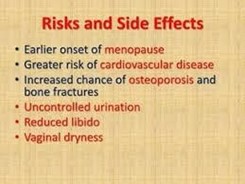A nurse is creating a plan of care for a client who has antisocial personality disorder. Which of the following interventions should the nurse include?
Appoint the client to be the leader during group therapy.
Monitor the client's interactions with other clients.
Offer the client two warnings before implementing consequences.
Assign the client to a room near the activity area.
The Correct Answer is B
Choice A rationale:
Appointing the client as a leader may not be appropriate, as individuals with antisocial personality disorder may misuse their position of authority.
Choice B rationale:
Clients with antisocial personality disorder often struggle with interpersonal relationships, may be manipulative, and may engage in behaviors that violate the rights of others. Monitoring the client's interactions with other clients helps ensure a safe and therapeutic environment while preventing harm to others.
Choice C rationale:
Offering warnings before consequences might not be effective with clients who have antisocial personality disorder, as they may disregard rules and consequences.
Choice D rationale:
Assigning a room near the activity area does not necessarily address the need to monitor the client's interactions with others.
Nursing Test Bank
Naxlex Comprehensive Predictor Exams
Related Questions
Correct Answer is D
Explanation
Choice A rationale:
Weight loss is not typically an expected manifestation following a total abdominal hysterectomy.
Choice B rationale:
Increased libido is not necessarily an expected manifestation following a total abdominal hysterectomy.
Choice C rationale:
Decreased menstrual bleeding is expected, as the uterus has been removed.
Choice D rationale:
Vaginal dryness is an expected manifestation following a total abdominal hysterectomy due to the removal of the ovaries, which produce hormones that contribute to vaginal lubrication.

Correct Answer is A
Explanation
Choice A rationale:
Low dietary intake of fiber is a significant risk factor for diverticular disease. A diet low in fiber can lead to constipation and increased pressure in the colon, contributing to the formation of diverticula.
Choice B rationale:
Prolonged use of steroids is not a primary risk factor for diverticular disease.
Choice C rationale:
Insufficient intake of protein is not a significant risk factor for diverticular disease.
Choice D rationale:
Family history of gallbladder disease is not directly associated with an increased risk of diverticular disease.
Whether you are a student looking to ace your exams or a practicing nurse seeking to enhance your expertise , our nursing education contents will empower you with the confidence and competence to make a difference in the lives of patients and become a respected leader in the healthcare field.
Visit Naxlex, invest in your future and unlock endless possibilities with our unparalleled nursing education contents today
Report Wrong Answer on the Current Question
Do you disagree with the answer? If yes, what is your expected answer? Explain.
Kindly be descriptive with the issue you are facing.
